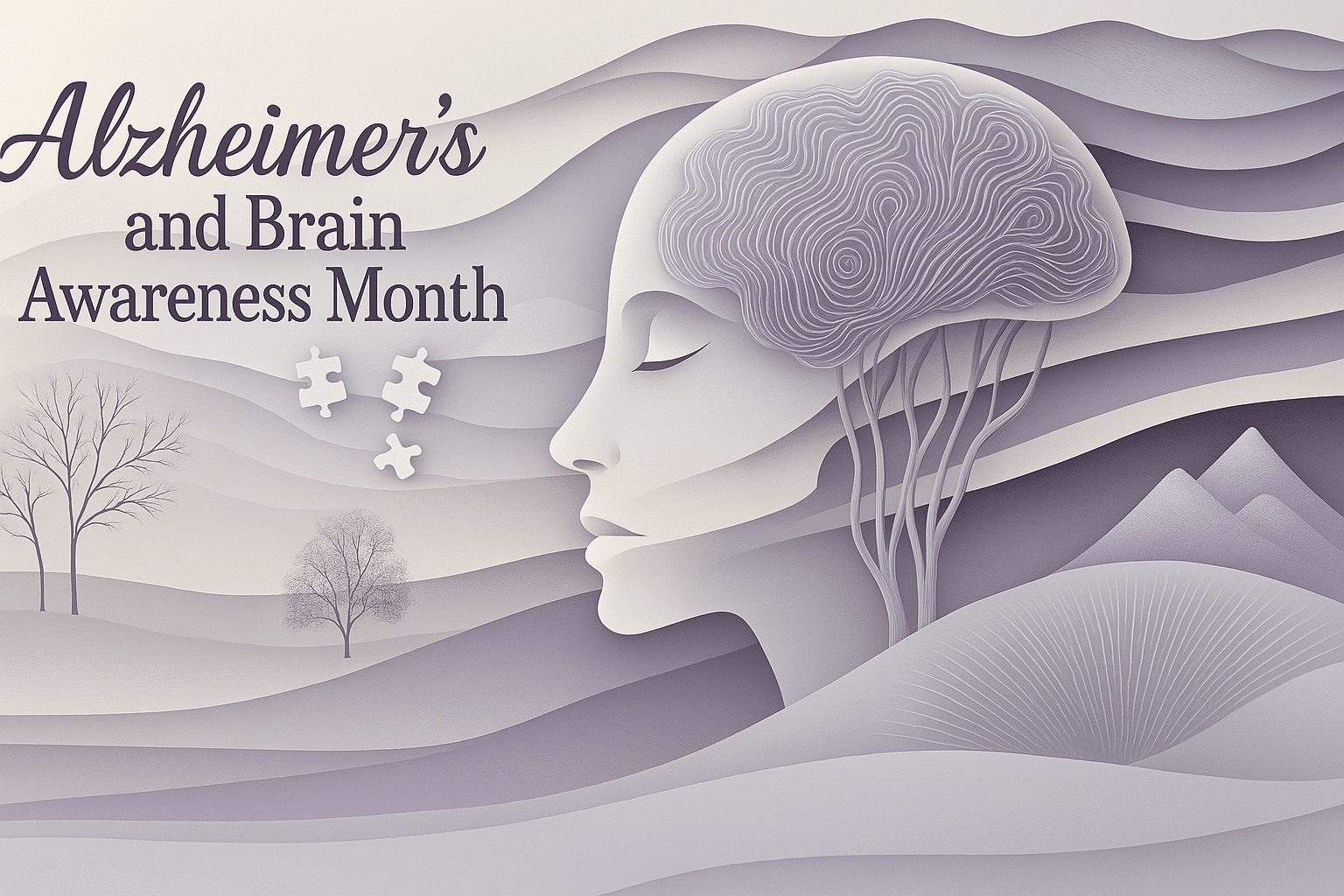What is Alzheimer’s and Brain Awareness Month?
Alzheimer’s and Brain Awareness Month is observed every year in June in the United States. It brings national attention to Alzheimer’s disease, other types of dementia, and the importance of brain health. The goal is to support individuals and families affected by cognitive decline, and to educate the public on early signs, prevention, and care.
This month invites people to take action. Whether by wearing purple, donating to research, or learning about brain function, the message is clear: understanding the brain helps protect it. The campaign reaches beyond medical facts and statistics ; it focuses on people, stories, and the need for compassion.
History and Origin
Alzheimer’s and Brain Awareness Month was established in 2014 by the Alzheimer’s Association. The organization launched the initiative to draw attention to the growing number of people affected by Alzheimer’s disease and to encourage early conversations about memory loss and mental clarity.
The launch included national campaigns, public events, and online outreach. One of the first efforts was called “My Brain,” with a focus on women, who are more likely to be affected by the disease and to serve as caregivers. Since then, every June has included a variety of public activities aimed at education, fundraising, and support.
Who participates in Alzheimer’s and Brain Awareness Month?
- Individuals and families: Share stories, learn more, and support loved ones with dementia.
- Healthcare providers: Offer screenings, advice, and resources for brain health.
- Advocacy groups and researchers: Promote studies, treatments, and public awareness.
- Schools and educators: Teach brain health and memory through classroom events.
- The general public: Participate in social media campaigns, walks, and fundraising events.
Slogans and Themes
Slogans include “Go Purple to End Alzheimer’s,” “Honor. Remember. Care. Fight,” and “The End of Alzheimer’s Starts with Me.” The focus is on action, awareness, and remembrance. Many themes highlight both the personal impact of dementia and the need for collective support in finding solutions.
Colors, Symbols, and Patterns
Colors
- Purple: Represents dignity, strength, and hope. It is the official color of Alzheimer’s awareness.
- Gray: Sometimes used to reflect brain function and clarity.
- White: Linked to remembrance and the search for a cure.
Symbols
- Purple ribbon: A widely recognized sign of Alzheimer’s and dementia awareness.
- Brain imagery: Highlights cognitive function and mental health.
- Butterflies: Used to symbolize transformation, memory, and hope.
Patterns
- Puzzle pieces: Represent complexity and the effort to understand Alzheimer’s.
- Neural designs: Show the structure and network of the brain.
- Gentle gradients: Suggest gradual memory loss and the fading of connections.
Most Used Hashtags
- #ENDALZ
- #GoPurple
- #AlzheimersAwareness
- #BrainAwareness
- #AlzheimersAndBrainAwarenessMonth
How do you celebrate Alzheimer’s and Brain Awareness Month?
- Wear purple: Use the color as a symbol of support and to spark conversation.
- Join a walk or fundraiser: Help raise money for research and support programs.
- Educate yourself: Learn about early warning signs and how to keep the brain healthy.
- Share your story: Post messages or photos to help others understand the impact of Alzheimer’s.
- Support caregivers: Offer help, company, or recognition to those providing daily care.
Why is Alzheimer’s and Brain Awareness Month important?
This month helps people understand what Alzheimer’s is, how it affects individuals and families, and why early detection matters. It breaks silence around memory loss, encourages people to seek help sooner, and makes space for empathy.
Alzheimer’s and Brain Awareness Month also pushes for progress. It fuels research, supports caregivers, and brings hope to families. By learning, sharing, and connecting, more people become part of the effort to protect brain health and work toward a future without Alzheimer’s.
Features
June: Alzheimer’s and Brain Awareness Month
Why do you keep falling for the same type?
Read the article Lovemaps: the hidden blueprint of our love.

